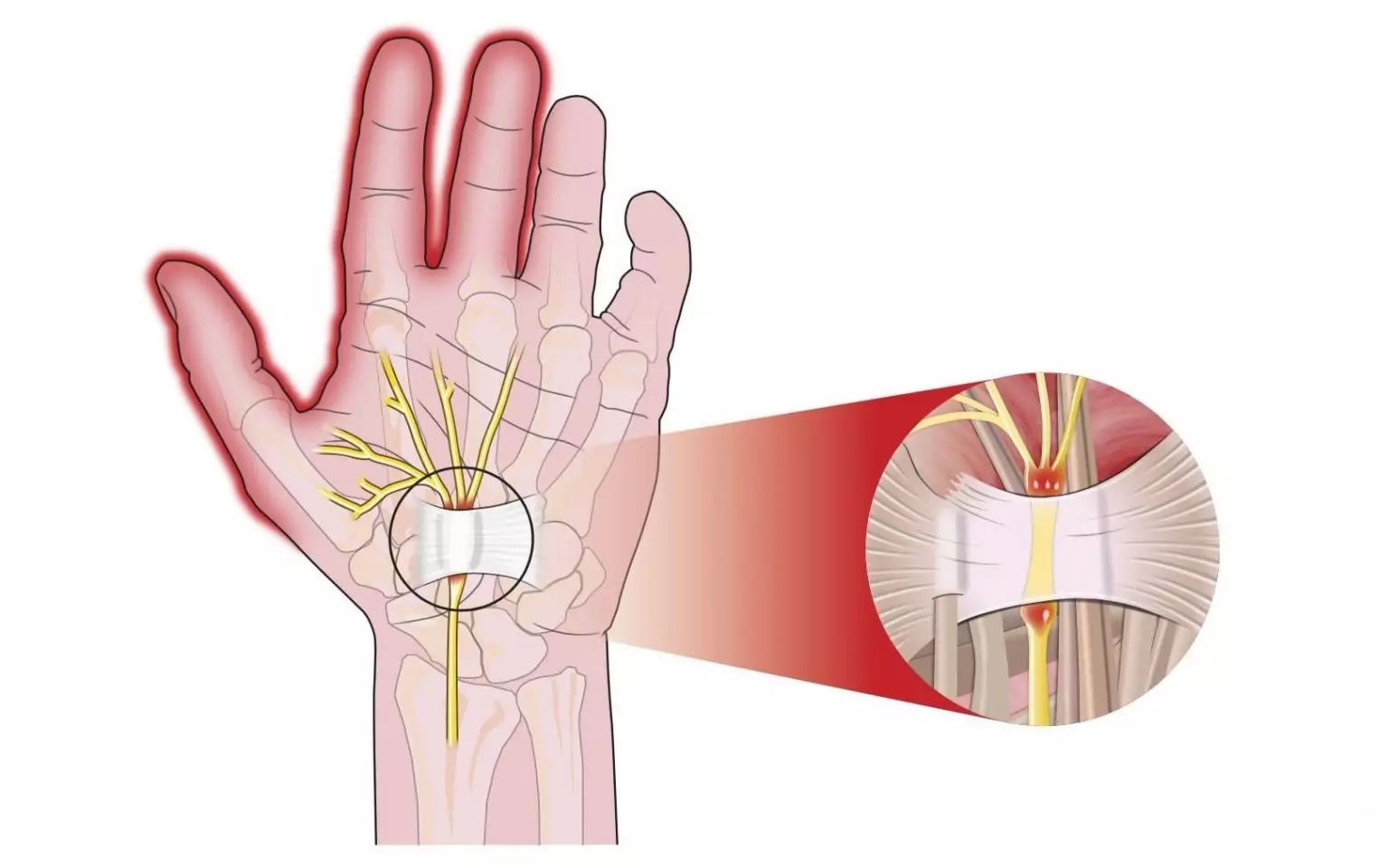Carpal Tunnel Syndrome
Carpal tunnel syndrome is one of the most common hand diseases that causes pain, numbness or tingling in the hand. This problem occurs when the median nerve of the wrist or carpal tunnel is compressed. Carpal tunnel syndrome in the early stages is easily cured by performing simple treatment strategies, but if it progresses, it needs surgery for treatment.

Symptoms of carpal tunnel syndrome:
Carpal tunnel syndrome has signs and symptoms that include:
A feeling of pain, numbness or tingling in the fingers that starts from the thumb and index finger and finally reaches the index and ring finger.
Pain or tingling sensation that starts in the forearm and slowly moves towards the shoulder.
A person with carpal tunnel syndrome feels weak in the tips of his fingers to the point where he has trouble closing the buttons of his clothes.
A feeling of weakness and laxity in the hand so that the person is unable to hold objects and causes them to fall.
Carpal tunnel syndrome surgery:
If the non-surgical treatments have no effect and the patient still faces symptoms such as pain and numbness, the doctor suggests surgery. The purpose of surgery is to remove pressure from the median nerve, which is called "carpal tunnel release". Carpal tunnel release is done in two ways:
First method: In this method, the surgeon makes a small incision on the palm so that he can access the inner parts of the hand. In this method, the two parts of the transverse carpal ligament are separated to increase the volume of the tunnel and remove the pressure from the nerve.
Endoscopic method: In this method, the surgeon uses a small device called an endoscope to view the internal components of the hand and release the carpal tunnel. The endoscope device has a camera and a light source that enters the body through a very small incision on the skin.
